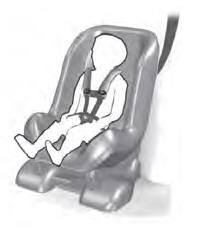Lincoln Aviator 2020-2025 Service Manual / Electrical / Climate Control System / Climate Control System - General Information / Removal and Installation - In-Vehicle Temperature and Humidity Sensor
Lincoln Aviator: Climate Control System - General Information / Removal and Installation - In-Vehicle Temperature and Humidity Sensor
Removal
-
Release the clips and remove the trim panel.
.jpg) |
-
Release the tabs and remove the In-vehicle tempreature and humdity sensor.
-
Disconnect the electrical connector.
-
Disconnect the electrical connector.
.jpg) |
Installation
-
To install, reverse the removal procedure.
 Removal and Installation - Heating, Ventilation and Air Conditioning (HVAC) Control Module
Removal and Installation - Heating, Ventilation and Air Conditioning (HVAC) Control Module
Removal
NOTE:
Removal steps in this procedure may contain installation details.
NOTE:
If installing a new module, it is necessary to
upload the module configuration information to the scan tool prior to
removing the module...
 Removal and Installation - Passenger Side Footwell Air Discharge Temperature Sensor
Removal and Installation - Passenger Side Footwell Air Discharge Temperature Sensor
Removal
Fully lower the glove compartment.
Disconnect the check strap.
Push the stop tabs inward.
Remove the passenger side register air discharge tempreature sensor...
Other information:
Lincoln Aviator 2020-2025 Service Manual: Removal and Installation - Front Seat Backrest Cover - Vehicles Without: Multi-Contour Seats
Special Tool(s) / General Equipment Interior Trim Remover Removal NOTE: Driver seat shown, passenger seat similar. Remove the front seat. Refer to: Front Seat (501-10A Front Seats, Removal and Installation). Remove the front seat backrest panel...
Lincoln Aviator 2020-2025 Service Manual: Removal and Installation - Rear Driveshaft Slip Yoke Boot
Special Tool(s) / General Equipment Crimping Tool Materials Name Specification Motorcraft® Premium Long-Life GreaseXG-1-E1 ESA-M1C75-B Removal Remove the rear driveshaft. Refer to: Rear Driveshaft (205-01 Driveshaft, Removal and Installation)...
Categories
- Manuals Home
- Lincoln Aviator Owners Manual
- Lincoln Aviator Service Manual
- Wireless Accessory Charger (If Equipped)
- Refueling
- Configuring The Head Up Display
- New on site
- Most important about car
Child Seats

Use a child restraint (sometimes called an infant carrier, convertible seat, or toddler seat) for infants, toddlers and children weighing 40 lb (18 kg) or less (generally four-years-old or younger).
Using Lap and Shoulder Belts
WARNING: Do not place a rearward facing child restraint in front of an active airbag. Failure to follow this instruction could result in personal injury or death.
Copyright © 2025 www.liaviator2.com
